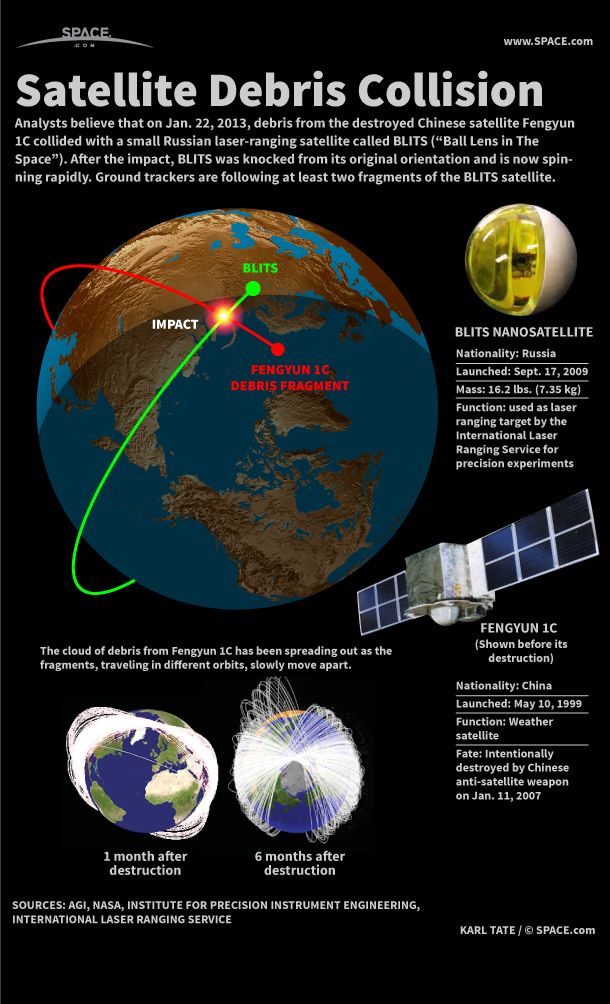Russian Satellite Crash with Chinese ASAT Debris Explained (Infographic)

Analysts believe that on Jan. 22, 2013, debris from the destroyed Chinese satellite Fengyun 1C collided with a small Russian laser-ranging retroreflector satellite called BLITS ("Ball Lens in The Space"). After the impact, BLITS was knocked from its original orientation and is now spinning rapidly. Ground trackers are following at least two fragments of the BLITS satellite.
The BLITS nanosatellite was launched into a polar orbit by Russia on Sept. 17, 2009. The tiny satellite weighs 16.2 pounds (7.35 kilograms)
BLITS is essentially a glass ball, 6.7 inches in diameter (170 mm). Two outer hemispheres of low-refraction-index glass surround an inner ball lens made of high-refraction-index glass. One half of the sphere is covered with an aluminum coating. The satellite rotated for stability and to achieve a precise orientation. BLITS was used as laser ranging target by the International Laser Ranging Service for precision experiments.
Space Junk and Orbital Debris Explained
The Fengyun 1C weather satellite was launched into a polar orbit by China on May 10, 1999. On Jan. 11, 2007 Fengyun 1C was intentionally destroyed. A "kinetic kill"anti-satellite vehicle was launched and intercepted Fengyun 1C at high speed. The collision shattered the satellite into many pieces.
The cloud of debris from Fengyun 1C has been spreading out as the fragments, traveling in different orbits, slowly move apart.
- Watch the Animation: Russian Satellite Hit by Space Junk
- Russian Satellite Hit by Chinese ASAT Test Debris (Photos)
- Worst Space Debris Events of All Time
Follow us @Spacedotcom, Facebook and Google+.
Join our Space Forums to keep talking space on the latest missions, night sky and more! And if you have a news tip, correction or comment, let us know at: community@space.com.
Get the Space.com Newsletter
Breaking space news, the latest updates on rocket launches, skywatching events and more!

Karl's association with Space.com goes back to 2000, when he was hired to produce interactive Flash graphics. From 2010 to 2016, Karl worked as an infographics specialist across all editorial properties of Purch (formerly known as TechMediaNetwork). Before joining Space.com, Karl spent 11 years at the New York headquarters of The Associated Press, creating news graphics for use around the world in newspapers and on the web. He has a degree in graphic design from Louisiana State University and now works as a freelance graphic designer in New York City.
